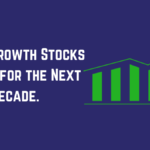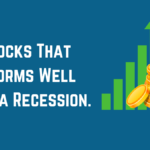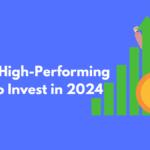Investing in the stock market is a crucial step toward financial growth and independence. While there are numerous strategies to consider, dividend investing stands out for its potential to provide a steady income stream. This article will explore the essentials of dividend investing, including how to get started, the benefits, and some top stocks to consider for 2024.
Understanding the Stock Market
Before diving into dividend stocks, it’s important to understand the basics of the stock market. The stock market is where investors trade shares of publicly listed companies. It’s driven by supply and demand, with stock prices fluctuating based on various factors, including company performance, economic conditions, and investor sentiment. Key terms to know include:
- Shares: Units of ownership in a company.
- Dividends: Portions of a company’s earnings distributed to shareholders.
- Portfolio: A collection of investments owned by an individual or institution
What Are Dividends?
Dividends are payments made by a company to its shareholders, usually from its profits. There are different types of dividends, such as cash dividends, stock dividends, and special dividends. Cash dividends are the most common, typically paid on a quarterly basis. Companies may also issue stock dividends, providing additional shares instead of cash.
The Benefits of Dividend Investing
Investing in dividend stocks offers several advantages:
- Steady Income Stream: Dividends provide regular income, which can be especially beneficial during market downturns.
- Lower Risk: Dividend-paying stocks often belong to well-established companies with stable earnings.
- Reinvestment Opportunities: Dividends can be reinvested to buy more shares, increasing returns over time.
ALSO READ: 7 Best Stocks for Long-Term Investing: Secure Consistent Profits in the Stock Market.
How to Start Investing in Dividend Stocks
Starting your journey in dividend investing involves a few key steps:
- Setting Investment Goals: Determine what you want to achieve, whether it’s income generation, long-term growth, or a combination of both.
- Choosing a Brokerage: Select a brokerage that offers a wide range of dividend stocks and low transaction fees.
- Researching and Selecting Stocks: Look for companies with a strong track record of paying dividends, solid financial health, and growth potential.
Building a Diversified Dividend Portfolio
Diversification is crucial to managing risk. By spreading investments across various sectors and companies, you can protect your portfolio from significant losses. For instance, combining stocks from telecommunications, healthcare, finance, and technology can offer a balanced approach.
Evaluating Dividend Stocks
When evaluating dividend stocks, consider the following metrics:
- Dividend Yield: The annual dividend payment divided by the stock price.
- Payout Ratio: The percentage of earnings distributed as dividends.
- Company Stability: Look for companies with consistent earnings, strong cash flow, and a history of dividend payments.
ALSO READ: Decoding the Stock Market: Tips and Tricks for Consistent Profits.
Top Dividend Stocks to Consider in 2024
Here are some top dividend stocks to consider for 2024:
- Verizon Communications Inc. (VZ): Known for its stability and high dividend yield.
- Stellantis NV (STLA): Offers a strong dividend yield and significant growth potential.
- Kenvue Inc. (KVUE): Reliable cash flows from well-known consumer brands.
- OneMain Holdings Inc. (OMF): High dividend yield with a proven lending business.
- Gilead Sciences Inc. (GILD): Strong growth potential in the biotech sector with a solid dividend yield.
Reinvestment Strategies
Reinvesting dividends can greatly boost your returns over time. Dividend Reinvestment Plans (DRIPs) allow investors to automatically reinvest their dividends into additional shares of the company. This strategy harnesses the power of compounding, where reinvested dividends generate more dividends, accelerating growth.
ALSO READ : Cryptocurrency Profit: A Basic Yet Powerful Guide to Unlocking Opportunities and Managing Risks.
Tax Considerations for Dividend Investors
Dividends have specific tax implications that investors should consider:
- Qualified Dividends: Taxed at a lower rate than ordinary income.
- Non-Qualified Dividends: Taxed at the individual’s regular income tax rate.
- Tax-Efficient Strategies: Holding dividend stocks in tax-advantaged accounts like IRAs can help minimize tax liabilities.
Managing Your Dividend Portfolio
Regularly review your dividend portfolio to ensure it aligns with your goals. Adjust your strategy based on market conditions and company performance. Tools like dividend trackers and financial news platforms can help you stay informed and make data-driven decisions.
Common Mistakes to Avoid
Avoid these common pitfalls when investing in dividend stocks:
- Over-concentration in High-Yield Stocks: High yields can be tempting but often come with higher risk.
- Ignoring Company Fundamentals: Ensure the company has a solid financial foundation.
- Chasing Past Performance: Focus on future potential rather than historical performance alone.

Case Study: Successful Dividend Investment
Consider the example of an investor who started with a diversified portfolio of dividend stocks. By reinvesting dividends and regularly reviewing the portfolio, they achieved steady growth and a reliable income stream. This approach highlights the importance of patience, research, and strategic reinvestment.
Future Trends in Dividend Investing
Looking ahead, several trends could impact dividend investing:
- Economic Conditions: Inflation and interest rates can affect dividend yields and company profitability.
- Emerging Sectors: Areas like renewable energy and technology may offer new dividend opportunities.
- Market Predictions: Experts predict a growing interest in dividend stocks as investors seek stability in uncertain times.
Conclusion
Dividend investing is a powerful strategy for achieving financial growth and stability. By understanding the basics, evaluating stocks carefully, and building a diversified portfolio, you can maximize your returns. Remember to stay informed, manage your portfolio actively, and reinvest dividends to harness the power of compounding.
FAQs
- What is the best time to invest in dividend stocks?
- The best time to invest is when you have thoroughly researched and identified quality dividend-paying companies with strong fundamentals.
- How do I choose between dividend stocks and growth stocks?
- Your choice should depend on your financial goals. Dividend stocks provide steady income, while growth stocks offer potential for capital appreciation.
- Are there any risks associated with dividend investing?
- Yes, risks include dividend cuts, company performance issues, and market volatility. Diversification can help reduce some of these risks.
- How often are dividends paid out?
- Dividends are typically paid quarterly, but some companies may pay monthly, semi-annually, or annually.
- Can I rely on dividends for retirement income?
- Dividends can be a reliable source of retirement income, especially if you build a diversified portfolio of stable, dividend-paying stocks. However, it’s important to also have a comprehensive retirement plan.
By following these strategies and staying informed, you can make the most of your investments in dividend stocks and work toward achieving your financial goals.










